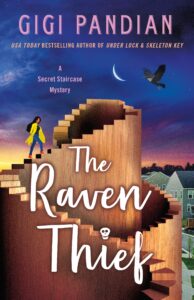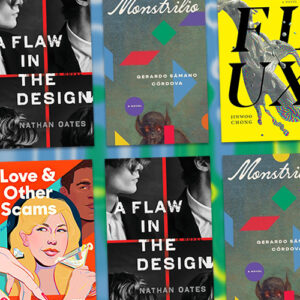Locked-room mysteries are the type of mystery in which a crime looks impossible. (Not to be confused with a “closed circle” mystery, in which the characters are stranded in an isolated setting.) Why are these mysteries appealing to so many readers? I’ve been a fan of locked-room mysteries for decades, and more recently I’ve become an author in the genre. Here are the three reasons why it’s such an enticing type of mystery.
First, you know you’re getting a “fair play” puzzle. Many mysteries include clues that are fairly presented, but readers don’t always know which of the many terrific mystery novels they’re picking up includes a puzzle as part of story. In a locked-room mystery, fair-play clues are necessary. Therefore, when a novel or short story is a locked-room mystery, you can be certain that there’s a mystery puzzle you can solve.
Clues will be deviously hidden, certainly. But they’re there. The solution of an impossible crime would be no fun if you weren’t given all the clues, so fairly presented information is a necessary element. It’s even more fun not to guess properly, in my opinion, and instead be delightfully surprised at the end.
Second, it’s not just any puzzle, but the ultimate puzzle. Because there’s no logical way for the crime to have been committed—be it jewels that disappeared from a guarded safe or a person fatally stabbed with nobody close enough to have done so—it’s not only a whodunnit, but also a howdunnit.
Fans of the genre may argue about whether there are any truly new ideas for how to pull off an impossible crime, but one thing is clear: authors continue to come up with ingenious ways to play with existing ideas and hide the truth in plain sight. Locked-room mystery writers continue to engage and surprise us with new twists to these puzzles.
Third, you’re likely to find a ghostly atmosphere as the backdrop. If readers wanted only a puzzle, they could pick up a crossword puzzle or other game. Many locked-room mystery enthusiasts appreciate other types of puzzles, as I do, but what elevates this written form of puzzle is the feeling a story can evoke. It’s so much more than a cerebral puzzle. In most locked-room mysteries, you’ll find a ghostly, Gothic atmosphere that permeates the story.
Therefore, you’re not only getting a twisty whodunnit and a baffling howdunnit, but also a good ghost story. Yes, there must be a rational explanation at the end, but along the way, you get swept up in the spooky atmosphere that provides an added layer of depth and mysterious fun.
John Dickson Carr, widely accepted as the master of the genre, expertly wove macabre elements into his books and stories, making it appear that only a supernatural hand could have caused the criminal events—until the solution reveals a rational explanation, usually revealed quite dramatically by one of Carr’s larger-than-life sleuths.
Where to start with locked-room mysteries? I wrote a locked-room mystery starter guide for CrimeReads in 2019, which included terminology and a starter list of books and stories from both the Golden Age of detective fiction (including John Dickson Carr, Clayton Rawson, Ellery Queen, and Agatha Christie) and current authors (including Paul Halter and Sōji Shimada).
I’m so pleased that in the few years since I wrote that feature, locked-room mysteries have become even more popular with both readers and writers. Recently, I was especially impressed by Tom Mead’s debut novel Death and the Conjuror, as well as newly translated Japanese novels by Seishi Yokomizo that are now being made available to an English-language audience.
My new locked-room mystery, The Raven Thief, plays with traditional elements of the genre, including hints of the supernatural when a séance leads to murder. I’m enjoying paying homage to the locked-room mysteries from the Golden Age of detective fiction—but putting my own spin on the genre. Atmosphere and characters are just as important as the puzzle to me, so I set the stage with home renovation company Secret Staircase Construction that builds magical elements like sliding bookcases and hidden rooms into peoples’ homes. I make sure the clues to solve the mystery are fairly presented, but I hope readers will get swept up in the story and enjoy a surprise when former stage illusionist sleuth Tempest Raj reveals the solution. One murder. Four impossibilities. A fake séance hides a very real crime.
I owe a great debt to the ingenious locked-room mystery writers—past and present and from around the world—who’ve given me countless hours of entertainment and inspired me to contribute to the genre.
***


















